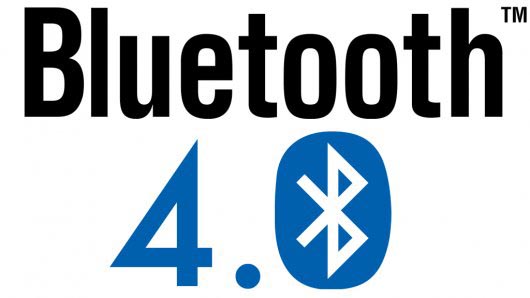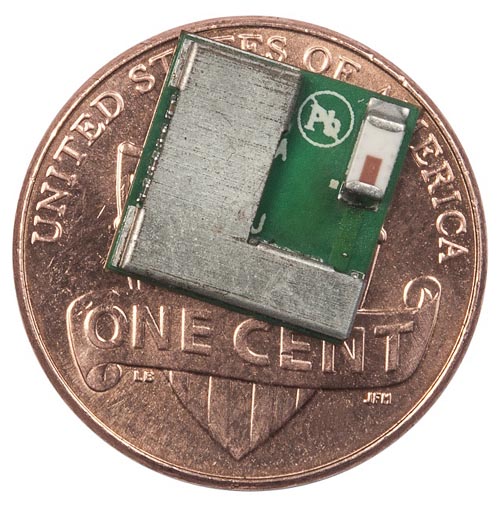Abhishek Gupta & Imran Mohammed, Cypress Semiconductor
EDN

Bluetooth technology has revolutionized wireless communications between devices with its ubiquitous and simple characteristics. It allows devices to communicate without cables while maintaining high levels of security. Because of its low power and low cost, Bluetooth has played a pivotal role in the evolution of applications from high-speed automotive devices to complex medical devices.
The ease and the global acceptance of Bluetooth technology means any Bluetooth-enabled device can connect with other devices located in close proximity through a process known as pairing. Pairing allows devices to establish a full duplex communication by transmitting data and voice through short range, ad hoc networks known as piconets that can link up to eight devices. One device serves as the master device, while the rest of the devices within the network/piconet are slave devices. The master device acts as a hub, and slave devices communicate through the master device in order to communicate with each other. Another important characteristic of Bluetooth technology is its use of frequency hopping to reduce the impact of interference.
The full duplex capabilities of Bluetooth technology provide users with innovative features such as connecting a phone with a Bluetooth music speaker, taking calls while driving a car, connecting two laptops for file sharing, and connecting a gaming console with a Bluetooth-enabled gaming controller, to name a few use cases.
Bluetooth Low Energy
Bluetooth Low Energy is the intelligent, power-friendly version of Bluetooth wireless technology. It is already playing a significant role in transforming smart gadgets to smarter gadgets by making them compact, affordable, and less complex.
Bluetooth Low Energy, also marketed as Bluetooth Smart, started as part of the Bluetooth 4.0 Core Specification. Initially designed by Nokia as Wibree before being adopted by the Bluetooth Special Interest Group (SIG), its initial focus was to provide a radio standard with the lowest possible power consumption, specifically optimized for low cost, low bandwidth, low power, and low complexity.
These design goals are evident through the core specification, which attempts to make BLE a genuine low-power standard, designed to actually be implemented by semiconductor manufacturers and used in real-world applications tight on energy with minimal budget. It is already a widely adopted technology that can realistically stake claim to run for an extended period of time off a single coin cell.
While BLE is a superior technology on its own merit, what has driven its phenomenal adoption rate is that it is the right technology, with the right compromises, at the right time. For a relatively young standard, the number of product designs that already include BLE puts it well ahead of other wireless technologies at the same point in their release cycles.
The challenges classic Bluetooth faced were fast battery draining and frequent loss of connection, requiring frequent pairing and re-pairing. Being able to successfully address these is one of the reasons for BLE’s rapid growth. Further driving adoption is the phenomenal growth in smartphones, tablets, and mobile computing. Early and active adoption of BLE by mobile industry heavyweights broke open the doors for wider implementation of BLE. This in turn has pushed semiconductor manufacturers to commit their limited resources to the technology they felt was the most likely to flourish in the long run.
While the mobile and tablet markets have become increasingly mature, the need for connectivity between the outside world and these devices has a huge growth potential. It offers peripheral vendors a unique opportunity to develop innovative devices that solve problems consumers might not even realize that they have today. So many benefits have converged around BLE, creating an opportunity for small and nimble product designers to gain access to a potentially massive market with task-specific, creative, and innovative products on a relatively modest design budget. BLE also allows these developers to design viable products today that can talk to any modern mobile platform using chips, tools, and standards that are easy to access.
Features
1. The lowest power consumption
Everything from physical design to use models is designed to keep power consumption at a minimum. To reduce power consumption, a BLE device is kept in sleep mode most of the time. When an event occurs, the device wakes and a short message is transferred to a gateway, PC, or smartphone. Maximum/peak power consumption is less than 15 mA and the average power consumption is about 1 μA. The active power consumption is reduced to a tenth of the energy consumption of classic Bluetooth. In low duty cycle applications, a button cell battery could provide 5-10 years of reliable operation.
2. Cost efficient and compatible
To offer compatibility with classic Bluetooth technology and cost efficiency for small battery-operated devices, there are two chipset types:
- Dual-mode technology with both BLE and classic Bluetooth functionality
- Stand-alone BLE technology optimized for small battery-operated devices with low cost and low power consumption as their focus
3. Robustness, security, and reliability
BLE technology uses the same adaptive frequency hopping (AFH) technology as classic Bluetooth technology. This enables BLE to achieve robust transmission in the ‘noisy’ RF environments found in the home, industrial, and medical applications. To minimize the cost and energy consumption of using AFH, BLE technology has reduced the number of channels to 40 2-MHz wide channels instead of the 79 1-MHz wide channels used with classic Bluetooth technology.
4. Wireless co-existence
Bluetooth technology, Wireless LAN, IEEE 802.15.4/ZigBee, and several proprietary radios use the license-free 2.4 GHz Industrial Scientific Medical (ISM) band. With so many technologies sharing the same radio space, interference can decrease wireless performance (i.e., increasing latency and decreasing throughput) due to the need for error correction and retransmission. In demanding applications, interference can be reduced through frequency planning and special antenna design. As both classic Bluetooth technology and BLE technology utilize AFH, which minimizes interference with other radio technologies, Bluetooth transmission is robust and reliable.
5. Connection range
BLE technology has a slightly different modulation than classic Bluetooth technology. This modulation differentiation offers a range of up to 300 meters with a 10 dBm radio chipset (BLE maximum).
6. Ease of use and integration
A BLE piconet is typically based on a master connected to a number of slaves. A device is either a master or a slave, but never both. The master controls how often the slaves are allowed to communicate, and the slave only communicates by request from the master. A new feature BLE adds compared to classic Bluetooth technology is “advertising” functionality. With this feature, a device acting as a slave can announce that it has something to transmit to the master. An advertisement message can also include an event or a measurement value.
Technical details
- Data transfers
BLE supports very short data packets (8 octet minimum up to 27 octets maximum) that are transferred at 1 Mbps. All connections use advanced sniff-sub rating to achieve ultra-low duty cycles to keep energy consumption to a minimum.
- Frequency hopping
BLE uses the AFH common to all versions of Bluetooth technology to minimize interference from other technologies in the 2.4 GHz ISM Band. Efficient multi-path benefits increase link budgets and effective operating range as well as optimize energy consumption.
- Host control
BLE places a significant amount of intelligence in the controller. This allows the host to sleep for longer periods of time and be woken up by the controller only when the host needs to perform some action. This allows for the greatest current savings since the host processor typically consumes greater power than the BLE controller.
- Latency
BLE can support connection setup and data transfer in as quickly as 3 ms. This enables an application to establish a connection and transfer authenticated data in just a few milliseconds for a short communication burst before quickly tearing down the connection.
- Range
An increased modulation index allows for a maximum range for BLE of over 100 meters.
- Robustness
BLE uses a strong 24-bit CRC on all packets to ensure the maximum robustness against interference.
- Strong security
Full AES-128 encryption using CCM provides strong encryption and authentication of data packets so communications are secure.
- Topology
BLE uses a 32-bit access address on every packet for each slave, allowing billions of devices to be connected. The technology is optimized for one-to-one connections while allowing one-to-many connections using a star topology.
| Table 1. | Comparison between classic Bluetooth and BLE | ||||||||||||||||||||||||||||||||||||
|
|||||||||||||||||||||||||||||||||||||
Applications
Because of its ubiquitous deployment in portable devices, BLE allows for wholly new applications across all industries. For example, consider the different ways BLE can be used at a trade show to increase the effectiveness of a company’s investment in meeting new customers:
- Gamification
BLE can be used to encourage attendees to explore less popular areas of a trade show booth by offering them special rewards for discovering strategically placed beacons in those areas.
- Sponsorships
Leverage beacons for additional revenue by pushing notifications that prompt attendees to check out the closest booth when they pass by a certain zone at the trade show venue. This can be a premium service offered to sponsors.
- Heat mapping
With access to real-time statistics, beacons can recognize hotspots and send alerts to event managers about locations that are overcrowded and more prone to security breaches.
- Content delivery
Attendees can avoid the long wait for a copy of the presentation slides via email. BLE beacons can recognize attendees at a session and automatically deliver slides, e-books, and other collateral during or immediately after the session.
- Auto check-in
Event organizers can easily gather information on the number of people attending an event or a trade show and view their profiles in real-time by setting up beacons to simulate check-ins at the entrance of the conference venue. This requires no manual interaction from users. and enabled Bluetooth on his/her mobile device, the app will automatically check-in as soon as the user walks into the venue.
 |
||
| EZ-BLE PRoC Module. | ||
A mature ecosystem is already available for BLE development. Developers have access to a wide range of chips and modules that can speed both hardware and software development of BLE-enabled devices. For example, Cypress offers its PSoC 4 BLE processor based on the ARM Cortex-M0 core that integrates analog front ends, digital logic, CapSense, and a Bluetooth LE radio for a one-chip approach to BLE. For OEMs preferring a fully integrated module, the Cypress EZ-BLE PRoC module is a 10×10×1.8 mm certified and programmable BLE module designed for ease-of-use and reduced time-to-market built around Cypress’s PRoC BLE chip.